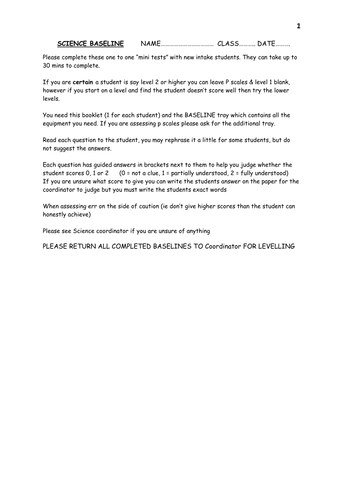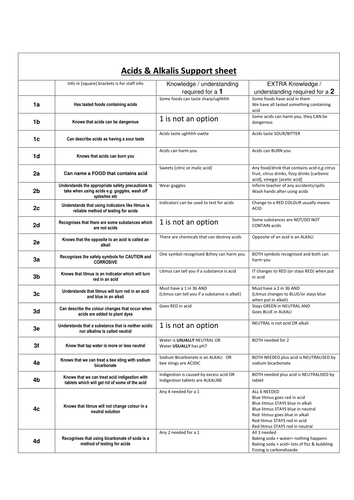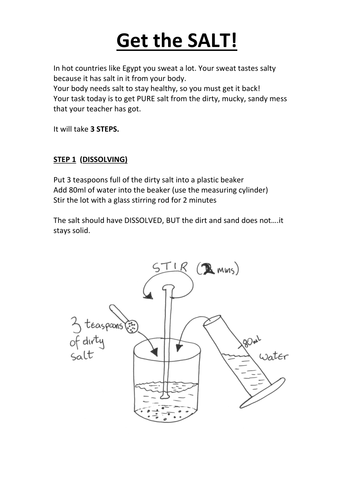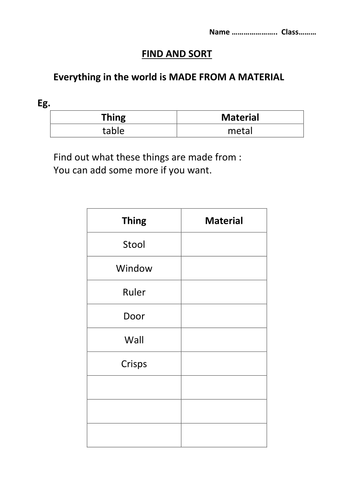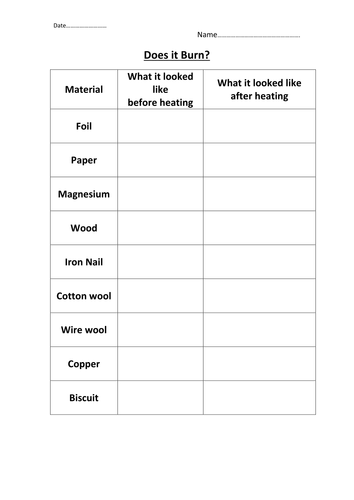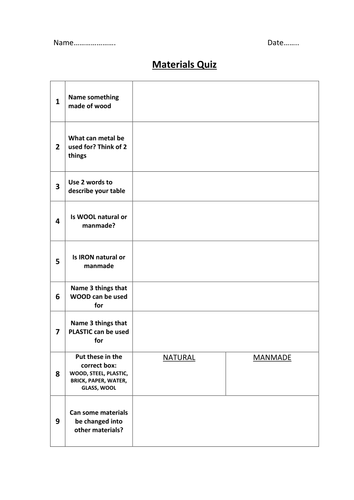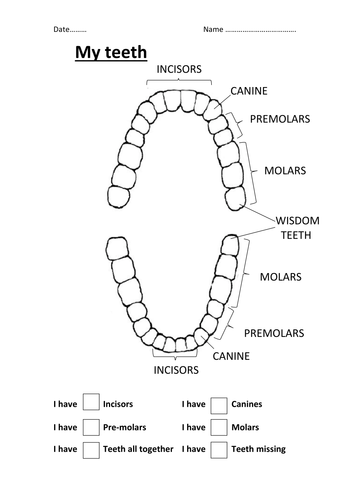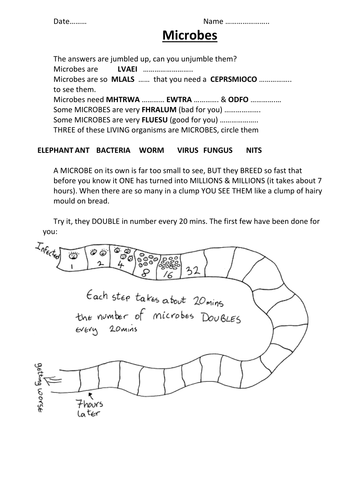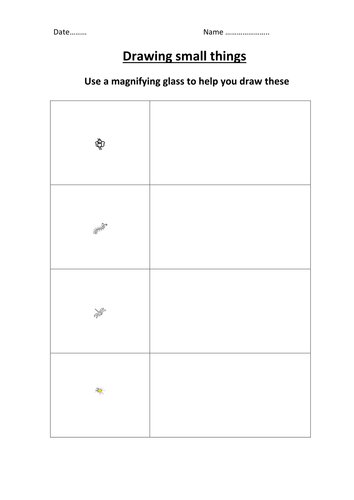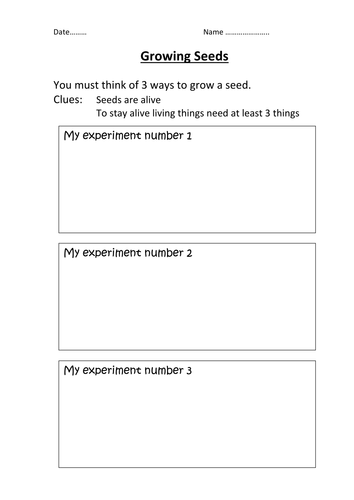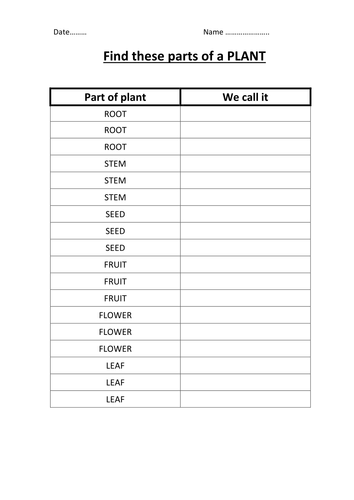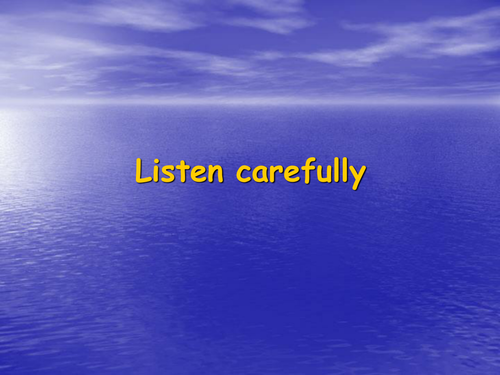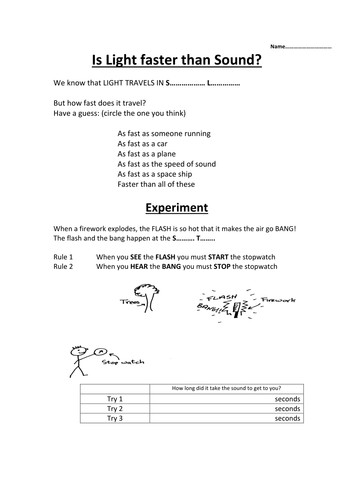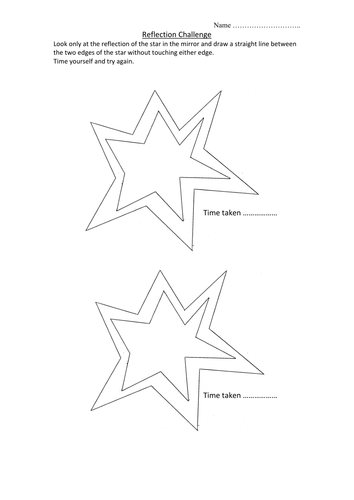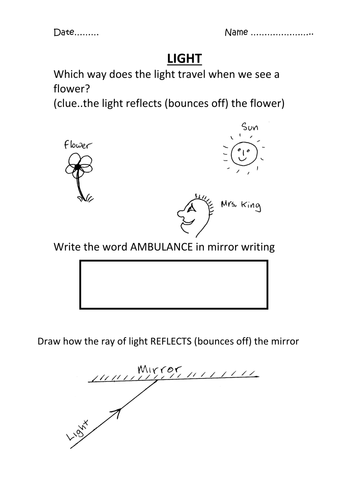
69Uploads
16k+Views
514Downloads
All resources

SCIENCE BASELINE assessment from level P4 to 4a (old NC levels)
I have used this assessment with students over the years and modified/improved as time went on.
I believe it to be a good way of assessing students when they are new to the school or even at the end of each year or indeed at any time you wish.
It is based around 4 small assessments for Biology, Chemistry & Physics, so a total of 12 mini-assessments.
Ideally the teacher or assistant spends up to 30 mins (can split the assessment over a few days if you wish but best results have been when the entire assessment is completed at one time) in a ONE TO ONE session.
The teacher/assistant reads the script (this is important as it reduces leading questions and clues to answers), the responses are noted down but in most cases a tick will indicate if the student has understood fully, partially understood or not understood at all.
Minimal resources are needed and are kept in a tray for use at any time. I believe doing or demonstrating science is a beautiful way to engage students, so the assesment uses this.
You will need to source basics like balloons, toy car, rocks etc.
I chose to set up 4 trays so 4 assessments could be completed at the same time (perhaps different classes)
The levels assessed are from P4 up to 4a old levels (which I believe are still useful) you may wish to change the names of the levels to suit your own school.
The script states which resources to use in each question as well as appropriate answers that should be expected for fully, partially and not at all levels of understanding. This allows staff that are not science trained to be able to complete these assessments with the students with relative ease.
Good luck

Earth and Beyond
A nice assessment "old" levels 1 to 5
Assesses student's understanding of the Earth, sun, shadows, Earth's axis, day & night etc etc
Students draw in shapes of Earth, orbits to show understanding. Also draw in the position of the sun at different times as well as shadow changes.
All in all a friendly way to judge progress.
Enjoy.

Heart and Circulation
A tried, tested and adjusted assessment which caters for "old" level 1 to about 5.
The assesment gives students a nicely set out piece of work, drawing in the lungs, arrowing direction of bloodflow, unlike the "dry" ambiguous written questions you often find.
I like to introduce some sort of "practical" in my assessments if possible, this assessment asks the students to measure their own pulse (I suggest stopwatches are made available, and possibly support if required).
Enjoy

Cells and microscopes assesment
A differentiated test which assesses studenta around level 1 to 4 (old NC levels)
You can of course alter in any way you wish. The assesment requires students to use a hand lens to draw what they see.
The scores are 0, 1 or 2 (you change or delete as you wish) the idea being 0=no understanding, 1=some understanding, 2=understands fully...this helps you gauge the level of understanding for this topic
Good luck

Acids & Alkalis
This is a tried, tested and improved assesment that has worked well with many students.
The assesment is based on the old NC levels 1 to 5 (subdivided into a,b & c)but you can convert into any level description you need, frankly a staged 1 to 5 indicator is as useful as ever whatever you may wish to call it.
I have devised a sytem which gives you a measure of success: each question can score 0, 1 or 2, if a student scores a 2 then you can say they understand the concept fully, score of 1 they understand partially, 0 means they may have experienced the concept but do not understand it much if at all.
The support sheet can be used as a teaching scheme for staff. Split into 3 columns the first column states what concept is being testsd, 2nd column tells you what is required for a score og 1, 3rd column what is required for a score of 2.
I have used this sytem to calculate a score for students...if they achieve 75% or more then I believe you can say they have achieved that level.
Good luck

Get the salt
Students are given some dirty salt (salt +sand/soil..whatever you wish) I have even simulated urine(orange juice) to reinforce the plight of poor hygeine in some countries.
The sheet takes students through the 3 steps of purifying the salt.
The final step of evaporating the water using evaporating basins can be tricky if the heat is left on too long.....if no bunsens/heat is available you can just leave the solutions to "dry out" naturally..you can get nice crystals forming over a couple of days.
Why not take the students out for fish and chips later on (keeping a sample of your salt to sprinkle on your chips)

Find and sorting materials
Simple worksheet that allows students to invstigate materials and their uses around school (at home for HW).
Students can look at specific objects(chair) and write down what it seems to be from.
Students are also encouraged to look for the material and say what it is used for...so that materials and properties are approached from both ways.
Then the more tricky task of putting materials into groups, students can classify them in their own way..get ready for some unusual classification techniques.
As an extension students can continue with materials/objects of their own choice..this usually introduces the student's own interests into scientific method.

Does it burn?
Lovely activity, not for the faint hearted.
Give students a selection of materials which they examine and describe simply.
They then (with the required H&S) heat the material/object using a bunsen(roaring or yellow...you decide), tongs, observe and describe the material afterwards.
I have done this expt using tea light candles in a classroom, with bench mats and an extra pair of eyes it worked beautifully.
This promotes many aspects of chemical changes, durability, suitability etc etc of materials for specific tasks

Materials quiz
A simple quiz with well thought out and tested questions intended to stimulate thought and discussion about materials and their properties.
There is no mark scheme as I have found that students come up with unexpected but valid answers which can engage the class and foster interest

My Teeth
A simple activity which could last a few lessons..depending on what you/the students find.
Possible extra apparatus you could use: mirrors, cotton wool buds to help counting (don't use cocktail sticks unless you have a few hors spare to fill in the incident forms).
The clear picture on the worksheet shows students which teeth are which and all they have to do is count their own and record the numbers. They can try on their own in pairs, use their tongue to keep track or cotton wool buds to "tap" the teeth as they count.
A mirror is very useful.
The activity usyually lends itself to much discussion regarding missing teeth, extra teeth, decay, bad breath, bacteria, diet etc.
I like it because you can just watch the students find out about "themselves" remind them it is not a competition, unless you want it to be.

Using a microscope
Worksheet that enables students to draw what they see under the microscope, suggested samples are on the sheet but of course you can add your own or even leave some blank for students to suggest.
I have had students hunting for insects, leaves are popular, worms, ants are tricky but petri dishes are helpful, dust, finger nail dirt, etc etc
Students love to enter the world of the microscopic..be prepared to allow a couple or 3 lessons to let their imagination soar.

Microbes
Straight forward worksheet that can be used to introduce the world of microbes, especially the fact that they multipky so quickly and can cause proiblems for us, as well as benefits for us quickly

Drawing small things
Students use hand lenses, magnifiers, whatever you have available....this can lead to a "not fair" discussion as some students only have low magnification.
The worksheet contains pictures of very small living things with varrying amounts of legs, antenae, wings, spots, colours...students must use the magnifier to draw as carefully as they can the pictures.
The students can then mark their own efforts after you tell them what detail you expected and they should have spotted..be prepared for lots of moaning and a bit of banter.

Growing seeds
I love these activities...you must be prepared for all sorts of ideas from the students...but more importantly allow them to try it out..PLEASE DO NOT tell them "this won't work because" and then give them all the answers that are required by law and the curriculum....let them excercise their own problem solving skills and love you for letting them try it out..in a controlled way of course.
Basically they need to find out/ try out/ explore what conditions seeds need to germinate successfully
I have had students burn some seeds with a bunsen as they had seen plants growing after a forest fire..indeed you can discuss thet some seeds need extreme heat before they germinate.
Other ideas students have had:
put in freezer overnight, soak in water, hit with rock, put in acid, keep in dark, keep in light, and so it goes on

Familiar plants
Very simple worksheet designed to make students realize that scientific names of parts of plants...roots, stem, flower, fruit have common names that they already know...carrot, leek, fruit
I have provided a shopping bag of fruit & veg to display and just let the students explore and realize, of course a set of photos works just as well but you can't eat them afterwards

PERISCOPE template
A simple A4 template that allows students to make a small but useable periscope, you will need the mirror card to glue onto the periscope.
Challenges to make them longer...ie make an extension tube...does not need to be square! could be tin foil tube etc...periscope is cut in half and the ends slipped over the extension tube.
I have had students make a "sea" out of tables, they crawl around underneath and pop up a periscope in gaps between tables to look around.

Listen...can you tell what itis?
A nice powerpoint bunch of slides..sound followed by the answer, you can edit the answers to suit yourself and names of staff for a bit of fun.
Add extra slides with your own sounds/student's or staff voices. Use your imagination...the idea is to recognize sounds...they can be anything..dropping things, flushing, rubbing, scratching, pets, etc etc etc

Speed of Light vs speed of sound
A beautiful demo with students timing with stopwatches.
I typically do this around bonfire night, but if you buy some rockets (the banging type) you can do this anytime.
You really need a school playing field with no sports or the like going on.
Wedge the wooden stick of the rocket (any size will do) into the ground in one corner of the field, get students with stopwatches as far away from the rocket as poss (yes for safety..but more importantly the further the better results you get)
YOU light the rocket and let students 200/300m away know that by usual jumpimg up and down or arm waving...students prepare to start stopwatches as soon as they see the FLASH (on the ground because the rocket is wedged into the ground)...the sound of course eerily does not get heard until a second or so later.
Do this as many times as you have rockets, all results can be pooled and averaged later on.
There is scope for this demo to be done a mile or 2 apart..using mobile phones and taking students to a nearby park..the rocket is released and explodes high up above school field...students do the timing thing from as far away as is practicable...Google maps will give you an accurate distance to calculate speed of sound should you wish

Reflection STAR challenge
We have had so much fun with this!
careful...some students (especially SEN) can get annoyed & "throw their toys out of the pram"...but I often "over" challenge my students so that they can practice handling "upset"..very important life skill.
Working in pairs one student holds a book or card infront of the other student so that they can not see the worksheet, using a mirror they can look at a reflection of the star and try to draw a straight line on the star outline without touching either of the boundary lines...try it yourself first and get rid of all that frustration

What do you know about light?
Thought provoking worksheet on light and what you thought about it.
Pictures are a great way to overcome conceptual difficulties, very friendly

